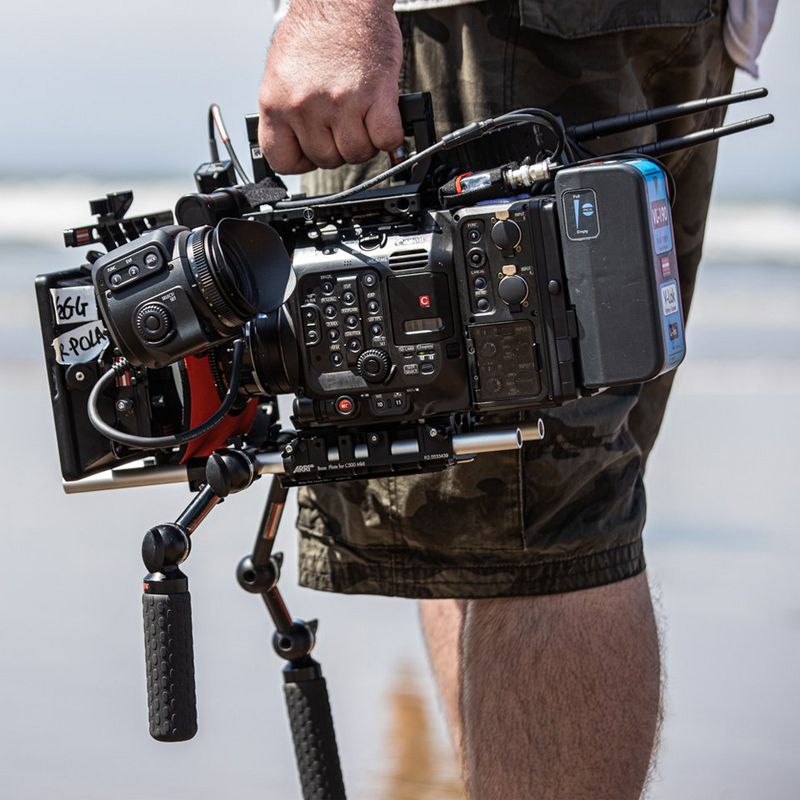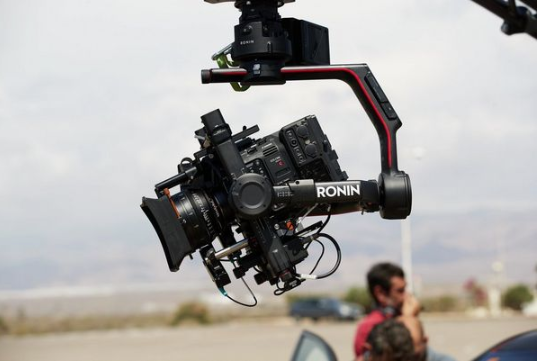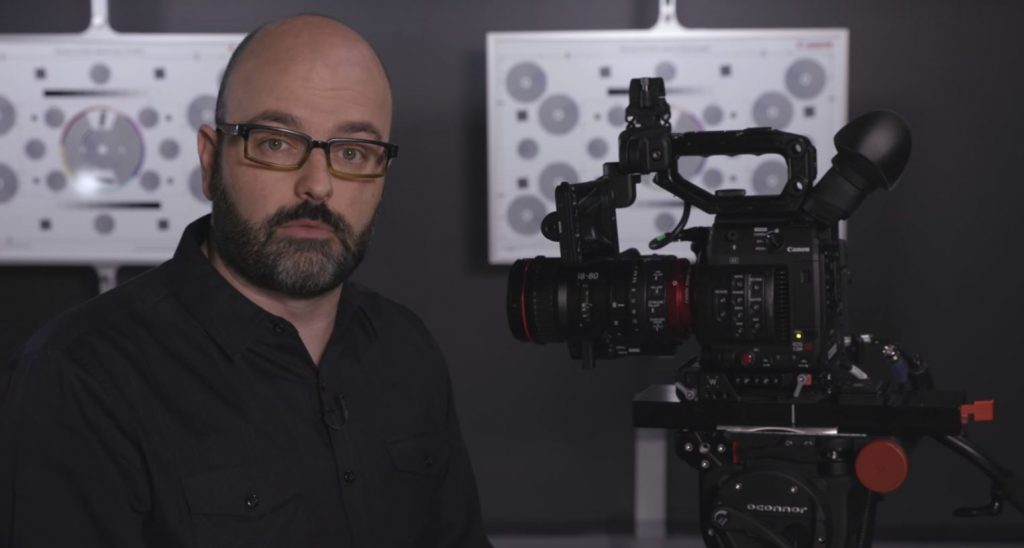Tag: Canon C200
Firmware Notice for the Canon EOS C200 and EOS C200B
If you own a Canon C200 or C200B camera, you’ll want to read the following announcement from Canon. They have determined that a recording error may occur with the EOS C200 / C200B. The details of the phenomenon and support plan are described below.
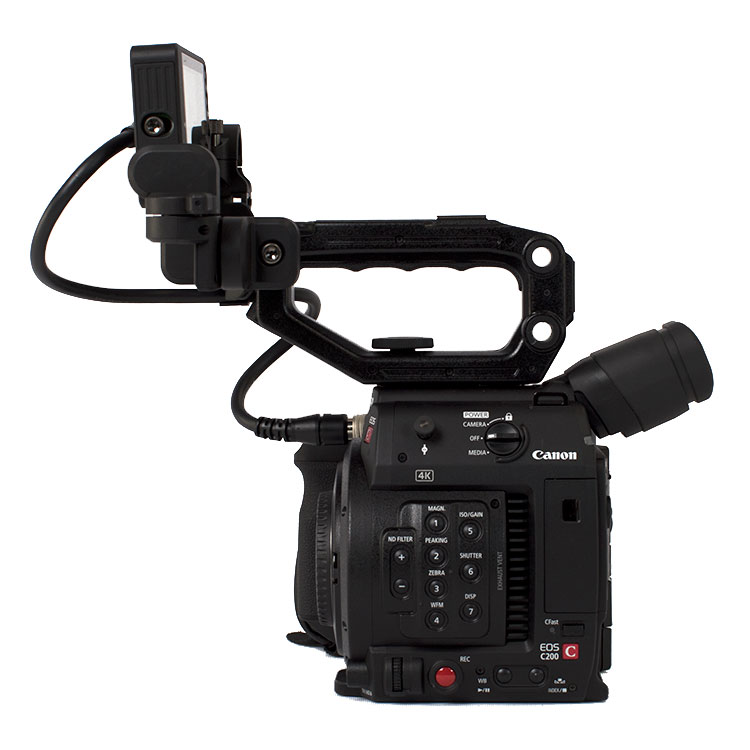
Phenomena
Image quality degradation, such as color misalignment or edge distortion, may occur in the recorded footage when using the following combination of settings:
- recording format XF-AVC
- frame rate 59.94i / 50.00i
- 1920×1080 resolution
Workaround
Users should use a configuration that does not include the settings listed above, although we acknowledge that this may not be possible for all users. Note: This Phenomenon only affects internally recorded footage. Output signals from the output terminals are not affected.
Affected Products
EOS C200 / C200B Digital Cinema Cameras equipped with Firmware Version 1.0.3.1.00 are affected.
Support
Firmware Version 1.0.3.1.00 has been removed from Canon’s Web site.
- The new Firmware is scheduled to be released mid-June 2018.
- If you have not already done so, please register the EOS C200/C200B. By registering, we will be able to notify you via email about future announcements.
- This information is for residents of the United States and its five territories only. If you do not reside in the USA or its five territories, please contact the Canon Customer Support Center in your region.
Contact Information for Inquiries
Canon Customer Support Center
Phone: 1-855-CINE-EOS (toll free)
1-855-246-3367
TDD: 1-866-251-3752
Email: CinemaEOS@cits.canon.com
For additional support options: usa.canon.com/support
If you have any questions, feel free to give us a call at 512-440-1400 to speak with a sales rep today! Looking to buy the Canon C200 or C200B, financing options are available!
Canon C200 & C200B Training Videos
Canon C200 & C200B Video Training Series:
Camera Overview
Host Jem Schofield gives an overview of the Canon C200 and C200B digital cinema camera systems. This episode explains the differences and similarities of the two models, takes a look at the design features, external accessories, sensor, processors, recording capabilities, touchscreen LCD, electronic viewfinder, inputs and outputs. Get familiar with the location and functions of the camera’s buttons, dials and controls.
Setting Up for Shooting – Part 1
In this episode, host Jem Schofield explains the Function (FUNC) button controls, examining White Balance, Iris and Shutter control, and the options when adjusting white balance, shutter, gain and aperture to achieve great results.
Setting Up for Shooting – Part 2
Explore some of the key Menu features and how to set up the Menu for your projects. Host Jem Schofield looks at buttons, dials and switches, activating LUTs, saving and loading camera settings, time code, video outputs, assignable buttons, the Status menu, My Menu features, and more.
Audio Setup
Host Jem Schofield explains the audio recording and monitoring capabilities of the Canon EOS C200 and C200B cameras. He walks you through setting up either 2-channel or 4-channel recording, and shows how to adjust and monitor the microphone levels using the Mic terminal, XLR inputs and camera body microphone.
Shooting with the Camera
In this video, host Jem Schofield demonstrates strategies for shooting with the Canon EOS C200 and C200B for best results. He goes in-depth about shooting with the cameras including the Focus Guide, focus assistance functions, recording formats (Cinema RAW Light/MP4), Color Space, Gamma and Custom Pictures/HDR settings, HDR/LUT options, exposure recommendations using the waveform, proxy recording, and more.
Dual Pixel CMOS Autofocus Features
In this video, host Jem Schofield demonstrates the key features of Dual Pixel CMOS Autofocus and touchscreen control of autofocus to get you ready for shooting with this important camera option.
Special Recording Modes & Browser Remote
Take a close look at Special Recoding Modes and explore the options for remote control operation of Canon’s EOS C200 and C200B camera systems. Host Jem Schofield takes a close look at slow motion recording options based upon recording format. Also, look at how to remotely operate the cameras when they are out of reach by using the Browser Remote feature and a computer, smartphone, or tablet.
Cinema RAW Light & Post Production
Host Jem Schofield is joined by post-production experts Loren Simons and Nicholas Recano to explore the best practices for working with Cinema RAW Light in a variety of post-production workflows including Cinema RAW Development software, BlackMagic Design DaVinci Resolve, and Avid Media Composer. Also, visit Canon Burbank’s DI Suite to examine at the intricacies of finishing a project with an OpenEXR/Aces finish using SGO’s Mistika color grading and finishing system.
CANON C200 DIGITAL CINEMA CAMERA 4K RAW INTERNAL – 2215C002 $7499
CANON C200B DIGITAL CINEMA CAMERA BODY W/O EVF – 2216C002 $5999
CANON C200B COMPLETE:
C200B + GR-V1 Grip, HDU-2 Handle, LM-V1 LCD, LA-V1 Attachment Unit, UN-5 Cable $7499
View Original Canon Digital Learning Center Article
Canon Announces C200 & C200B Cinema EOS Cameras
Canon USA announced an expansion to their Cinema EOS Line in a press release this morning, the EOS C200 and EOS C200B. We had a chance to get our hands on this camera before the announcement and made this video breaking down the major features and innovations:
The EOS C200 Digital Cinema Camera is a “ready-to- go” production camera that comes with a built-in electronic viewfinder and an array of accessories including a 4-inch touch screen LCD monitor, a versatile handle and ergonomic handgrip. The camera can record internal 4K RAW to a CFast™ 2.0 card in our new Cinema RAW Light format without compromising detail, as well as 4K UHD and Full HD in MP4 format to SD cards. The 8.85 Megapixel Super 35mm CMOS sensor, 13 stops of dynamic range, Dual Pixel CMOS AF, full compatibility with Canon EF-mount lenses, and HDR capability help make the EOS C200 ideal for film, documentary and television production, corporate and event videography, and newsgathering.
The EOS C200B version comes as a standalone camera body, excluding the built-in electronic viewfinder, LCD monitor, handle and handgrip. This will allow the user the flexibility to customize the camera with a wide range of accessories to fit their specific needs. The EOS C200B’s smaller form factor allows it to be used in tighter spaces, and more easily attached to a gimbal or drone.
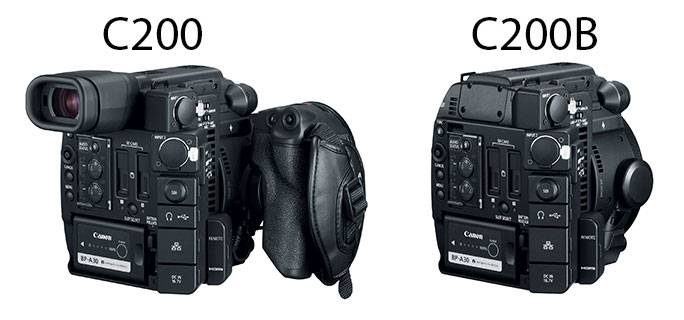
Canon’s announcement included the pricelist of $7,499.00 for the C200 and $5,999.00 for the EOS C200B models. Though Canon’s popular 0% Financing Promotion for its Cinema EOS Line has not yet been extended to include the C200 or C200B, even with standard financing you should be able to own one for under $200/month (either model). You can join our waitlist on each individual product page, or check out the press release or on the Canon website. Below is a video shot on the C200: From Dock to Dish.

